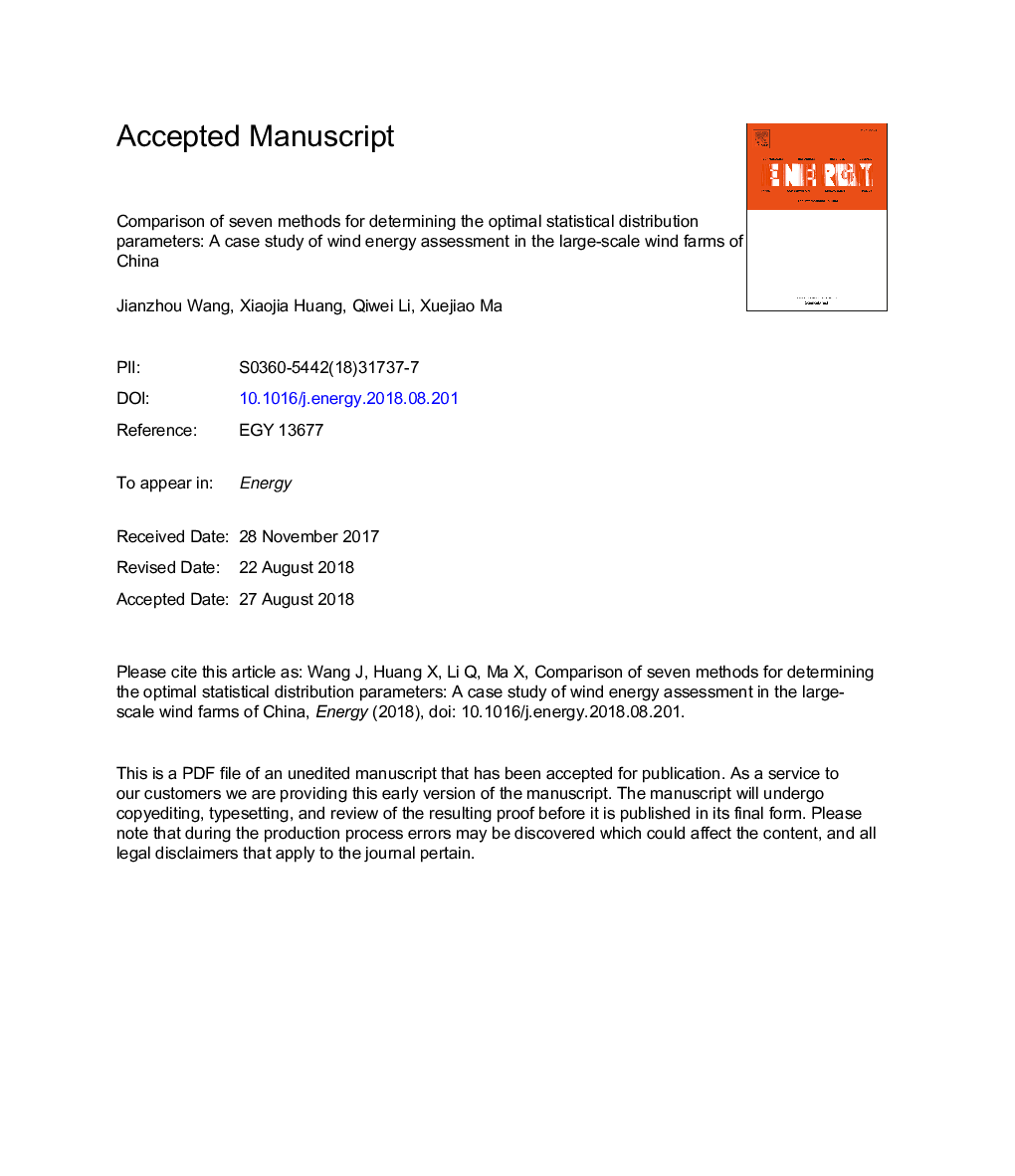| Article ID | Journal | Published Year | Pages | File Type |
|---|---|---|---|---|
| 10147763 | Energy | 2018 | 47 Pages |
Abstract
Evaluation and analysis of wind energy in large-scale wind farms is the pivotal link with regard to the wind farm's siting and economic benefit evaluation. For numerous years, several statistical distributions have been utilized to assess and analyze wind energy. However, the determination of the optimal distribution for the effective evaluation and analysis of wind energy is still a difficult and challenging task. In this study, the selection strategy is developed for the establishment of the optimal statistical model for wind energy assessment and analysis on the basis of the root-mean-square error, and the best outcome is obtained through simulation calculations based on the Weibull distribution. To further improve the fitting accuracy, three artificial intelligence algorithms-namely, the grey wolf optimizer, particle swarm optimization, and cuckoo search algorithms-and four numerical methods, are utilized to ascertain the optimal parameters for the Weibull model. The experimental results indicate that the grey wolf optimizer algorithm presents the most efficient and accurate methodology for the estimation of the Weibull distribution parameters. Therefore, the grey wolf optimizer algorithm is particularly suitable for the assessment and analysis of wind energy in large-scale wind farms.
Keywords
Related Topics
Physical Sciences and Engineering
Energy
Energy (General)
Authors
Jianzhou Wang, Xiaojia Huang, Qiwei Li, Xuejiao Ma,
